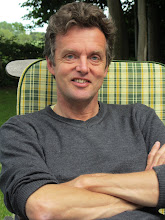ELECTION FEVER (5)
The British decided, after five years of coalition government, that they didn't like it very much, and went back to electing the Conservatives with a majority. If they had seen the results of Thursday's general election in Denmark, they would probably have recoiled with horror.
Viewers of Borgen will know that you have to count to 90 to get a majority in Denmark's unicameral 179-seat Folketing. On that basis, the right-of-centre "blue block" won over the left-of-centre "red block" by 90-89 (the victory is in fact a bit more decisive than that, since the red block won all four of the seats decided in Greenland and the Faeroe Islands; by convention, they don't vote very often and certainly not when it comes to forming governments, if they can help it). So the red block candidate for Prime Minister (and current holder of the post) Helle Thorning-Schmidt has resigned, and the top job will go to the blue block candidate, opposition leader Lars Løkke Rasmussen. So far, so simple; but there are also complications, on both sides of the aisle.
Ms. Thorning-Schmidt in fact managed to increase the Social Democrats' number of seats for the first time since 1998, and her party will be comfortably the largest in Parliament, with 47. Despite that, she chose to resign as party leader on election night, after 10 years in the job. It is highly likely that she will be replaced by the outgoing Justice Minister Mette Frederiksen, long viewed as the Crown Princess.
The reason behind the red block's overall loss was the collapse of the vote for both the governing coalition partner the Radicals (who went from 17 seats to 8) and the former coalition partner Socialists (who went from 16 to 7). Since the very left-wing Enhedslisten rose slightly from 12 to 14, much of the slack was taken up by the new party the Alternative, who stormed into Parliament with 9 seats, an astonishing result, given that many commentators thought that they would not get over the 2% threshold.
There were also complications within the blue block. In the previous Parliament Mr. Rasmussen's Venstre were the largest party, with 47 seats, but they got a drubbing this time that reduced them to 34, their worst result in 25 years. The biggest party on the right is now the very right-wing Danish People's Party, with 37 seats. Particularly in the conservative, rural areas of southern Jutland, there was a switch from one party to the other by voters disgusted with Mr. Rasmussen's perceived lack of personal probity (see my earlier posts). Despite the DPP's being bigger, it is still Mr. Rasmussen who is likely to become Prime Minister. In British terms, this is a bit like Nigel Farage saying before the election that he would support David Cameron in government, UKIP doing better in the election than the Conservatives, and Mr. Cameron still becoming Prime Minister. Yet it doesn't seem that odd in Denmark.
The other parties on the right are the ultra liberal, pro-business Liberal Alliance, who had a good election and went from 9 seats to 13; and the Conservatives, who continued their decline and had the worst election ever in their 100-year history, falling from 8 seats to 6. In the last period of right-of-centre government in the noughties, Venstre were big brother and the Conservatives little brother; but it's hard to remember that in the period before that, during the 1980's, it was the Conservatives who were big brother, and Poul Schlüter was Prime Minister for more than a decade. Today the Conservatives face possible extinction.
As Prime Ministerial candidate, Mr. Rasmussen gets first chance to form a government. If it consists of all four blue parties, then it will have a majority. However, although in theory all blue, there are in fact huge (and, in my view) unbridgeable differences between them. The DPP is an odd mixture of nationalist and socialist policies, that has done a fantastic job of staying out of government and exerting influence as a protest party. But as the biggest party on the right, can it remain a protest party and continue to shirk responsibility for running the country? And if it does join the government, can it avoid messy compromises and maintain its squeaky clean on-message reputation?
The DPP will probably get support from the others for more immigrant and asylum-seeker bashing. But it also wants to leave the E.U., whereas the other three don't. And whereas Venstre went to the polls on a promise of "zero % growth" in the world's biggest welfare state, the DPP wants to increase public spending, particularly on its core supporters amongst the elderly, while both the Conservatives and Liberal Alliance want to take an axe to the public sector and thereby give room for tax cuts. Against that background, a more likely scenario is a minority Venstre-led government, perhaps with one or more of the other three, but not all of them.
What to make of all of this? The most obvious, and most depressing, conclusion is the collapse of the traditional political parties, particularly in the centre ground. Parties of the extreme left, extreme right and oddballs (the Alternative, Greenland and the Faeroe Islands) now hold 64 seats, more than a third of Parliament (equivalent to around 220 in the House of Commons). As in other countries, people are fed up with politicians and politics as usual. Which means in turn that the next four years will be unusually interesting.
Walter Blotscher
Saturday, 20 June 2015
Subscribe to:
Post Comments (Atom)

No comments:
Post a Comment